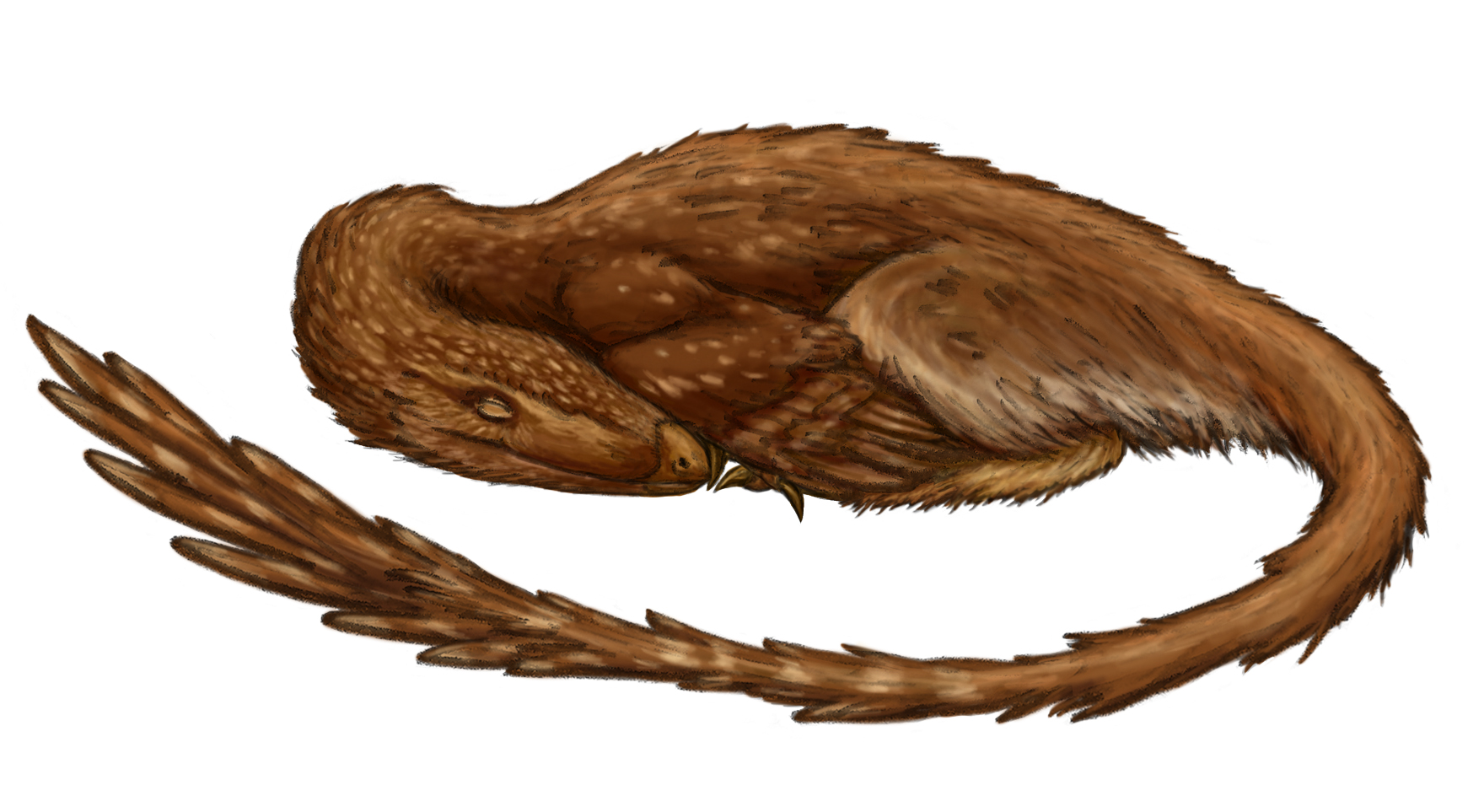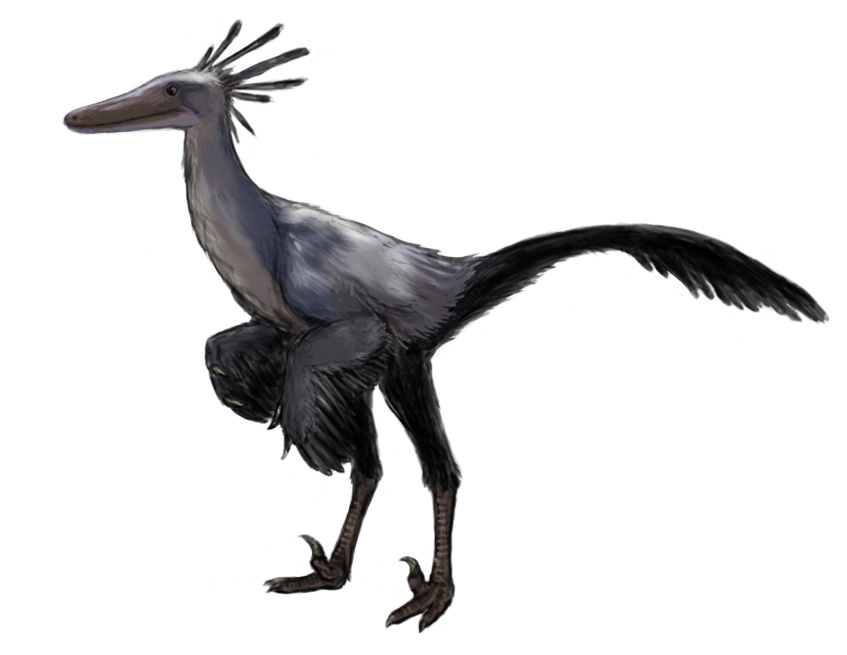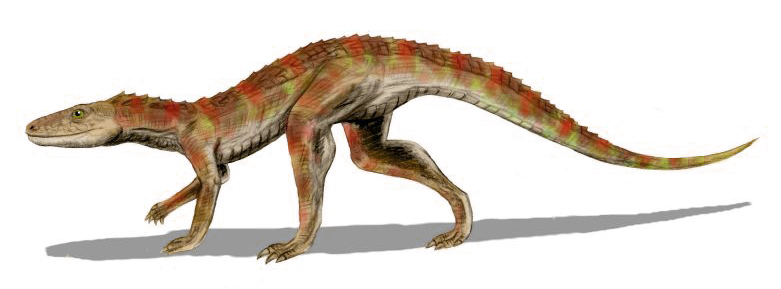|
Archaeornithoides
''Archaeornithoides'' is a genus of maniraptoran theropod dinosaur of the Late Cretaceous of Mongolia. Discovery and naming In 1965, a Polish-Mongolian paleontological expedition found a fossil of a small dinosaur at Bayn Dzak, Mongolia. In 1983, the find was reported by Andrzej Elzanowski. The remains were named as the type species ''Archaeornithoides deinosauriscus'' by Elzanowski and Peter Wellnhofer in 1992. In 1993, they were described in more detail by the same authors. The generic name (''Archaeornithoides'') means “shaped like an ancient bird” in Ancient Greek, from ἀρχαῖος, ''archaios'', "ancient"; ὄρνις, ''ornis'', "bird"; and εἶδος, ''eidos'', "form". The Specific name (zoology), specific descriptor ''deinosauriscus'', "little dinosaur", alludes to the animal's small size for a dinosaur. The holotype, ZPAL MgD-II/29, was discovered in Late Cretaceous river sandstones of the Djadokhta Formation beds, dating from the late Campanian. It consist ... [...More Info...] [...Related Items...] OR: [Wikipedia] [Google] [Baidu] |
Deltatheridium
''Deltatheridium'' (meaning ''triangle beast'' or ''delta beast'') is an extinct species of metatherian. It lived in what is now Mongolia during the Upper Cretaceous, ''circa'' 80 million years ago. A study in 2022 strongly suggested that Deltatherium was a marsupial, making it the earliest known member of this group. It had a length of about . Its teeth indicate it was carnivorous. One specimen of ''Archaeornithoides'' might attest an attack by this mammal, the skull bearing tooth marks that match its teeth.Elżanowski, A. Wellnhoffer, P. (1993). "Skull of Archaeornithoides From the Upper Cretaceous of Mongolia". earth.geology.yale.edu/~ajs/1993/11.1993.08Elzanowski.pdf . American Journal of Science Other Mesozoic mammals from Mongolia *'' Kamptobaatar'' *''Zalambdalestes ''Zalambdalestes'' (meaning ''much-like-lambda robber'') was a eutherian mammal, most likely not a placental due to the presence of an epipubic bone, living during the Upper Cretaceous in Mongolia. ' ... [...More Info...] [...Related Items...] OR: [Wikipedia] [Google] [Baidu] |
Bayn Dzak
The Flaming Cliffs site (also known as Bayanzag ( zh, 巴彥扎格), Bain-Dzak or Bayn Dzak) ( mn, Баянзаг ''rich in saxaul''), with the alternative Mongolian name of mn, Улаан Эрэг (''red cliffs''), is a region of the Gobi Desert in the Ömnögovi Province of Mongolia, in which important fossil finds have been made. It was given this name by American paleontologist Roy Chapman Andrews, who visited in the 1920s. The area is most famous for yielding the first discovery of dinosaur eggs. Other finds in the area include specimens of ''Velociraptor'' and eutherian mammals. It exposes rocks of the Djadochta Formation. It is illegal to remove fossils from the area without appropriate permits. The nickname refers to the red or orange color of the sandstone cliffs (especially at a sunset),. Dinosaur bones/fossils The following are dinosaur fossils that have been found in the Flaming Cliffs. Theropods: *Maniraptorans: ''Archaeornithoides'', ''Velociraptor'', ''Saurornith ... [...More Info...] [...Related Items...] OR: [Wikipedia] [Google] [Baidu] |
Troodont
Troodontidae is a clade of bird-like theropod dinosaurs. During most of the 20th century, troodontid fossils were few and incomplete and they have therefore been allied, at various times, with many dinosaurian lineages. More recent fossil discoveries of complete and articulated specimens (including specimens which preserve feathers, eggs, embryos, and complete juveniles), have helped to increase understanding about this group. Anatomical studies, particularly studies of the most primitive troodontids, like ''Sinovenator'', demonstrate striking anatomical similarities with ''Archaeopteryx'' and primitive dromaeosaurids, and demonstrate that they are relatives comprising a clade called Paraves. Description Troodontids are a group of small, bird-like, gracile maniraptorans. All troodontids have unique features of the skull, such as large numbers of closely spaced teeth in the lower jaw. Troodontids have sickle-claws and raptorial hands, and some of the highest non-avian encephal ... [...More Info...] [...Related Items...] OR: [Wikipedia] [Google] [Baidu] |
Djadokhta Formation
The Djadochta Formation (sometimes transcribed and also known as Djadokhta, Djadokata, or Dzhadokhtskaya) is a highly fossiliferous geological formation situated in Central Asia, Gobi Desert, dating from the Late Cretaceous period, about 75 million to 71 million years ago. The type locality is the Bayn Dzak locality, famously known as the Flaming Cliffs. Dinosaur, mammal, and other reptile remains are among the fossils that have been recovered from the formation. Excavation history The Djadochta Formation was first documented and explored—though only a single locality—during paleontological expeditions of the American Museum of Natural History in 1922–1925, which were part of the Central Asiatic Expeditions. The expeditions were led by Roy Chapman Andrews, in company of Walter Willis Granger as chief paleontologist and field team. The team did extensive exploration at the Bayn Dzak (formerly Shabarakh Usu) region, which they nicknamed Flaming Cliffs given that at suns ... [...More Info...] [...Related Items...] OR: [Wikipedia] [Google] [Baidu] |
Late Cretaceous
The Late Cretaceous (100.5–66 Ma) is the younger of two epochs into which the Cretaceous Period is divided in the geologic time scale. Rock strata from this epoch form the Upper Cretaceous Series. The Cretaceous is named after ''creta'', the Latin word for the white limestone known as chalk. The chalk of northern France and the white cliffs of south-eastern England date from the Cretaceous Period. Climate During the Late Cretaceous, the climate was warmer than present, although throughout the period a cooling trend is evident. The tropics became restricted to equatorial regions and northern latitudes experienced markedly more seasonal climatic conditions. Geography Due to plate tectonics, the Americas were gradually moving westward, causing the Atlantic Ocean to expand. The Western Interior Seaway divided North America into eastern and western halves; Appalachia and Laramidia. India maintained a northward course towards Asia. In the Southern Hemisphere, Australia a ... [...More Info...] [...Related Items...] OR: [Wikipedia] [Google] [Baidu] |
Byronosaurus
''Byronosaurus'' is a genus of troodontid dinosaur from the Late Cretaceous Period of Mongolia. Discovery and naming In 1993, Michael Novacek, a member of an American Museum of Natural History expedition to the Gobi Desert, discovered the skeleton of a small theropod at Ukhaa Tolgod. This was further excavated in 1994 and 1995. The find was illustrated in a publication in 1994. On 15 July 1996, at the Bolor's Hill site, about eight kilometers (five miles) away from the original location, a second specimen was discovered, a skull. In 2000, Mark Norell, Peter Makovicky and James Clark named and described the type species ''Byronosaurus jaffei''. The species name as a whole honoured Byron Jaffe, "in recognition of his family's support for the Mongolian Academy of Sciences-American Museum of Natural History Paleontological Expeditions". The holotype, IGM 100/983, was found in a layer of the Djadochta Formation dating from the late Campanian. It consists of a partial skeleton w ... [...More Info...] [...Related Items...] OR: [Wikipedia] [Google] [Baidu] |
Saurornithoides
''Saurornithoides'' ( ) is a genus of troodontid maniraptoran dinosaur, which lived during the Late Cretaceous period. These creatures were predators, which could run fast on their hind legs and had excellent sight and hearing. The name is derived from the Greek stems ''saur~'' (lizard), ''ornith~'' (bird) and ''eides'' (form), referring to its bird-like skull. Description ''Saurornithoides'' is a member of the troodontids, a group of small, bird-like, gracile maniraptorans. All troodontids have many unique features of the skull, such as closely spaced teeth in the lower jaw, and large numbers of teeth. Troodontids have sickle-claws and raptorial hands, and some of the highest non-avian encephalization quotients, meaning they were behaviourally advanced and had keen senses. ''Saurornithoides'' was a rather small troodontid. Though a possible adult, the type specimen has a midline skull length of 189 millimetres, compared to 272 millimetres for ''Zanabazar junior'', itself ... [...More Info...] [...Related Items...] OR: [Wikipedia] [Google] [Baidu] |
Crocodylomorph
Crocodylomorpha is a group of pseudosuchian archosaurs that includes the crocodilians and their extinct relatives. They were the only members of Pseudosuchia to survive the end-Triassic extinction. During Mesozoic and early Cenozoic times, crocodylomorphs were far more diverse than they are now. Triassic forms were small, lightly built, active terrestrial animals. The earliest and most primitive crocodylomorphs are represented by " sphenosuchians", a paraphyletic assemblage containing small-bodied forms with elongated limbs that walked upright, which represents the ancestral morphology of Crocodylomorpha. These forms persisted until the end of the Jurassic. During the Jurassic, Crocodylomorphs morphologically diversified into numerous niches, including into the aquatic and marine realms. Evolutionary history When their extinct species and stem group are examined, the crocodylian lineage (clade Pseudosuchia, formerly Crurotarsi) proves to have been a very diverse and adaptive ... [...More Info...] [...Related Items...] OR: [Wikipedia] [Google] [Baidu] |
Clade
A clade (), also known as a monophyletic group or natural group, is a group of organisms that are monophyletic – that is, composed of a common ancestor and all its lineal descendants – on a phylogenetic tree. Rather than the English term, the equivalent Latin term ''cladus'' (plural ''cladi'') is often used in taxonomical literature. The common ancestor may be an individual, a population, or a species (extinct or extant). Clades are nested, one in another, as each branch in turn splits into smaller branches. These splits reflect evolutionary history as populations diverged and evolved independently. Clades are termed monophyletic (Greek: "one clan") groups. Over the last few decades, the cladistic approach has revolutionized biological classification and revealed surprising evolutionary relationships among organisms. Increasingly, taxonomists try to avoid naming taxa that are not clades; that is, taxa that are not monophyletic. Some of the relationships between org ... [...More Info...] [...Related Items...] OR: [Wikipedia] [Google] [Baidu] |
Lisboasaurus
''Lisboasaurus'' is a small (400 mm length) genus of Mesozoic crocodylomorph that lived in fresh water. It is known from fossilized tooth and jaw fragments of Late Jurassic and Early Cretaceous age. Two species have been described. In the past ''Lisboasaurus'' has been interpreted as an avialan, troodontid, or an anguimorph lizard. Both species are currently assigned to Crocodylomorpha, one is reassigned to the genus ''Lusitanisuchus''. Discovery and naming In the 1960s paleontologists From the Free University Berlin located new vertebrate fossil sites that included the lignite mines of Guimarota, near the town of Leiria, Portugal. These lignites are dated by Milner and Evans, 1991, between Bathonian (middle Jurassic) to Oxfordian (early Late Jurassic) age. Schwarz and Fechner, 2004, date them as Late Jurassic. Seiffert, (1970, 1973), described ''Lisboasaurus'' as a genus of anguimorph lepidosaur comprising two species, ''L. estesi'' and ''L. mitracostatus''. He subdivi ... [...More Info...] [...Related Items...] OR: [Wikipedia] [Google] [Baidu] |
Spinosauridae
The Spinosauridae (or spinosaurids) are a clade or family of tetanuran theropod dinosaurs comprising ten to seventeen known genera. They came into prominence during the Cretaceous period. Spinosaurid fossils have been recovered worldwide, including Africa, Europe, South America and Asia. Their remains have generally been attributed to the Early to Mid Cretaceous. Spinosaurids were large bipedal carnivores. Their crocodilian-like skulls were long, low and narrow, bearing conical teeth with reduced or absent serrations. The tips of their upper and lower jaws fanned out into a spoon-shaped structure similar to a rosette, behind which there was a notch in the upper jaw that the expanded tip of the lower jaw fit into. The nostrils of spinosaurids were retracted to a position further back on the head than in most other theropods, and they had bony crests on their heads along the midline of their skulls. Their robust shoulders wielded stocky forelimbs, with three-fingered hands that ... [...More Info...] [...Related Items...] OR: [Wikipedia] [Google] [Baidu] |







